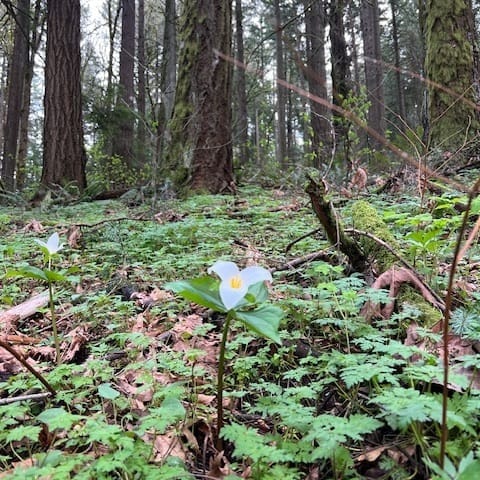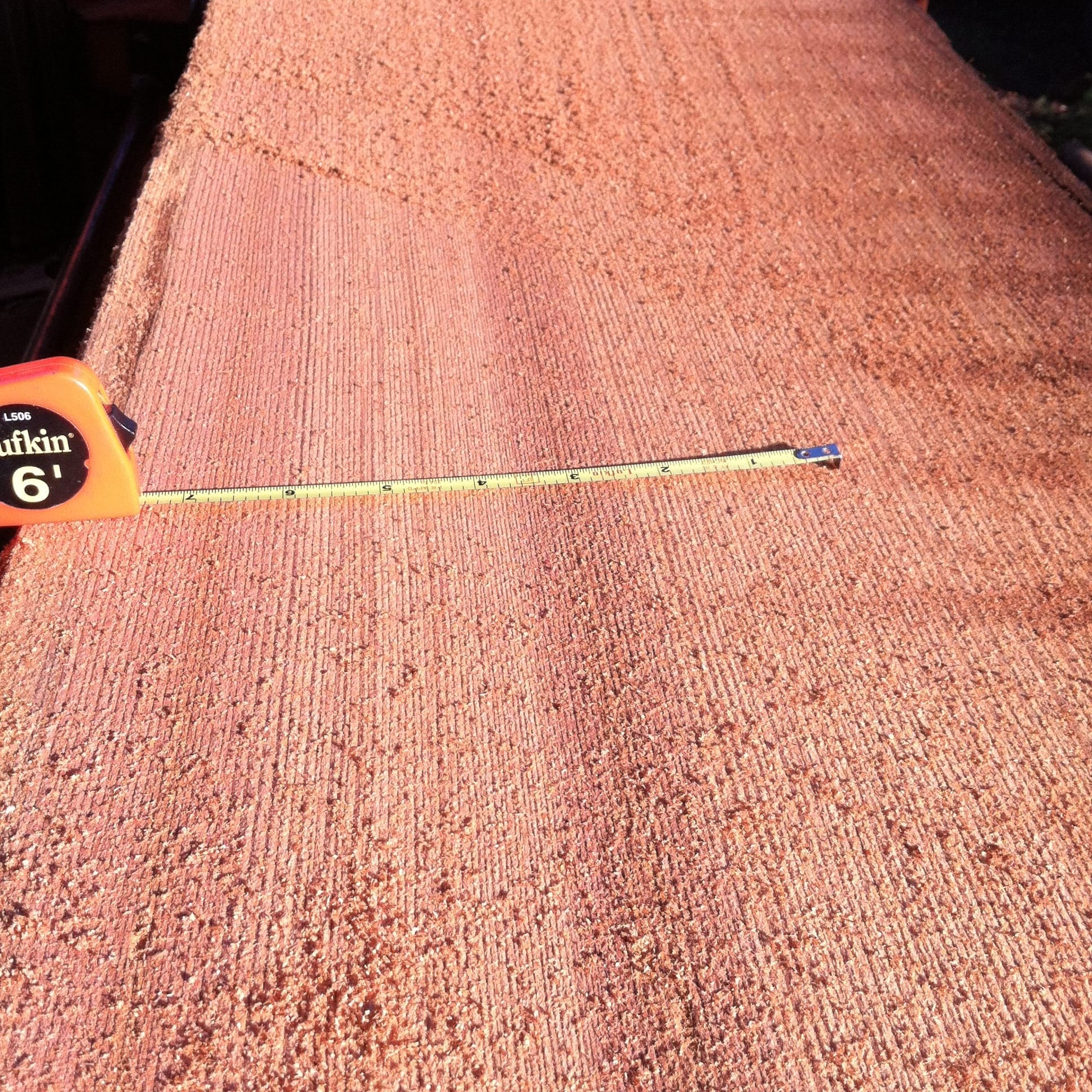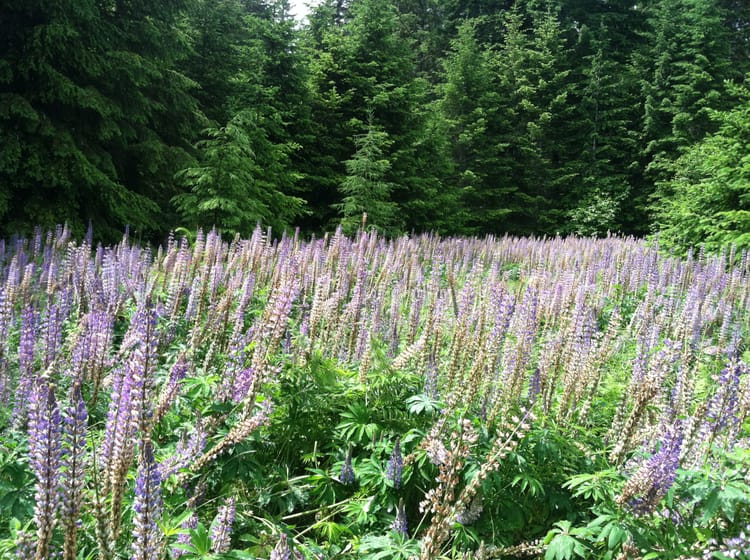Quarterly Update – 2025 Q1:
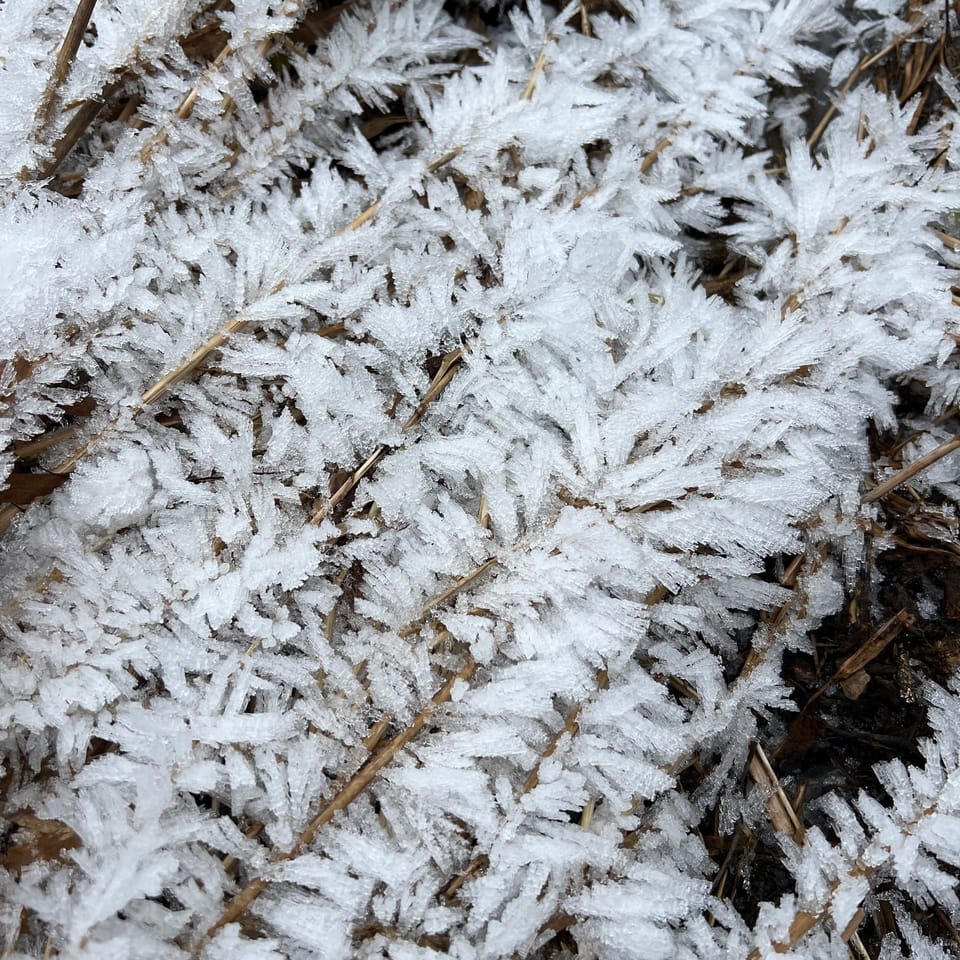
Setting to work on this first quarterly update, I find myself simultaneously excited and daunted. After playing catch up on the first half of the decade, I’m excited to settle into capturing and sharing the doings at the pace of a more manageable three months at a time. On the other hand, on the broader scale, what a quarter it has been! To say that the contrast between the events in the pleasantly snoozing forests and the tumult fomented by a new President and administration is a stark understatement. This disjoint motivates me to swap my plan of sequentially reporting on the forests and then the wider world for attempting to weave the two together. Though words don’t do justice, I must try. Accordingly, this update is organized into three clumps: news from the forests and wider world, exploration of potential future impacts on the forests, and snapshot reminders that in the forests there is always so much there to love.
What’s Up? -
While the Hyla Woods forests were reliably sleeping through much of the first quarter of 2025, events in the world beyond the forests have been wild, tumultuous and stressful. I don’t think that there as been a more significantly destabilizing and worrisome quarter in my sixty eight years.
- January was notable for having a long stretch of dry and sunny weather. In the time of year when we expect and normally get relentless rain falling from continuously gray skies, filling the creeks and ponds to overflowing, this January, day after day was dry and clear. This went on long enough to cross the line from enjoyable into unsettling. For the first twenty days of the month, my family and I found it impossible to avoid or ignore the anticipation of what the presidential inauguration would bring. The forests appeared to sleep soundly and quietly through it all; no birds sang and beyond the sound of wind through the bare-limbed trees, the forests were often silent, still and peaceful. Following the January 20th inauguration, the forests slept on – but the nation and world did not.
- In early March, during a visit with friends over a cup of tea, I asked “how are you doing with what’s happening?”. The husband’s answer stays vividly with me: “Though I have been sad and upset by all that’s happening, I was holding my emotions together - until they came for the trees. That crossed a line when they came for the trees”. On March 1, under his call to “Free Our Forests”, the President issued an executive order for “Immediate Expansion of American Timber Production”. Amongst the ongoing blizzard of words used in the vain attempt to describe what’s happening, this framing of “they came for..” resonates better for me than other efforts. So, what else have they come for? Though the list is too long to allow for trying to be comprehensive, here’s a sampler of some which are most significant to me – and, most likely, to the three Hyla Woods forests.
- While the year’s final coho spawned, died and rotted to return their ocean-gathered nutrients to the forest, the President and his new administration, once again, came for standards of truth and honesty through seemingly endless lie-filled communications.
- While the catkins on the hazels grew longer and longer and the first skunk cabbage poked up green leaves in search of spring’s light, the ICE agents came for those judged to be no longer welcome.
- While I walked on the ice of a forest pond marveling at the mass of Red legged frog eggs suspended in the water below, they came for our nation’s deep legacy of respecting the sovereignty and needs of our international valued friends and allies. They humiliated and tried to intimidate and bully Ukrainians, threatened our long supportive neighbors and other countries, cut off aide and allied with authoritarian dictators.
- While I marveled at the many types of fresh animal tracks in the forest’s snow – and how pathetic I am at learning who they belong to – they came for the effectiveness and, in some cases, existence of countless, valuable federal agencies, recklessly firing staff, illegally cancelling funding authorized by Congress and dismembering the capacities of many arms of the government. By doing this, they came for the livelihoods and security of so many people, including employees, their families and those dependent on the agency’s services.
- While I squatted amongst the ferns spying on the large, beautiful bull elk feeding beside the ice-fringed creek, appreciating the joyful calls of Pacific tree frogs (formerly Hyla Regilla!), they pulled the US from international climate agreements, cut off all climate-related funding, bragged about having “driven a dagger through the heart of climate change religion” and came for essentially all life forms through executive orders intended to circumvent foundational laws such as the Endangered Species Act and Clean Water Act.
- While we and enthusiastic community volunteers braved stormy February weather to plant and protect oaks, they came for both the power and authority of the constitution and congress to guide the effective governance of our country.
- While I wrestled with bucking and moving road-blocking trees blown down by accelerating winds from a neighbor’s fresh clear cut, they came for basic freedoms including free speech and the right to protest and vote, and the functioning of a free press.
- While we methodically tucked fir seedlings into the ground with dreams of what they might become, they came for the rights and dignity of our transgender friends and relatives and erased the inspiring stories of non-white national heroes from government websites.
- As March brought with it return migrations of noisy geese, long-soaring vultures, warming temperatures and the first flush of green leaves on the Oso berries, they came for funding for science and universities, the ability of our judiciary to limit their abuses of power and our confidence that essential systems like Medicaid, Medicare and Social Security would be robust enough to withstand the steps they’re taking to destroy the federal government.
- While the forest’s resident bears emerged from hibernation and began prospecting for their first meal, federal officials deported hundreds of immigrants to El Salvador without due process and in defiance of a judge’s order.
- And finally, as the cherry’s blooms briefly light up pockets in the forests, nettles spring from moist soils and temperatures spike to the mid eighties, accelerating the growth of grass, maples begin to unfurl their leaves, peppy Pacific wrens call out and the honey-like sweetness of fresh cottonwoods is carried on the breeze through the awakening forest anchoring us in what is real, true, reliable and sustaining.
- In this first quarter of 2025 I live between the forests, where nothing unexpected, challenging or troubling has happened and the wider world where too much changes with each passing day. We carry on with gratitude, respect and vigilance.
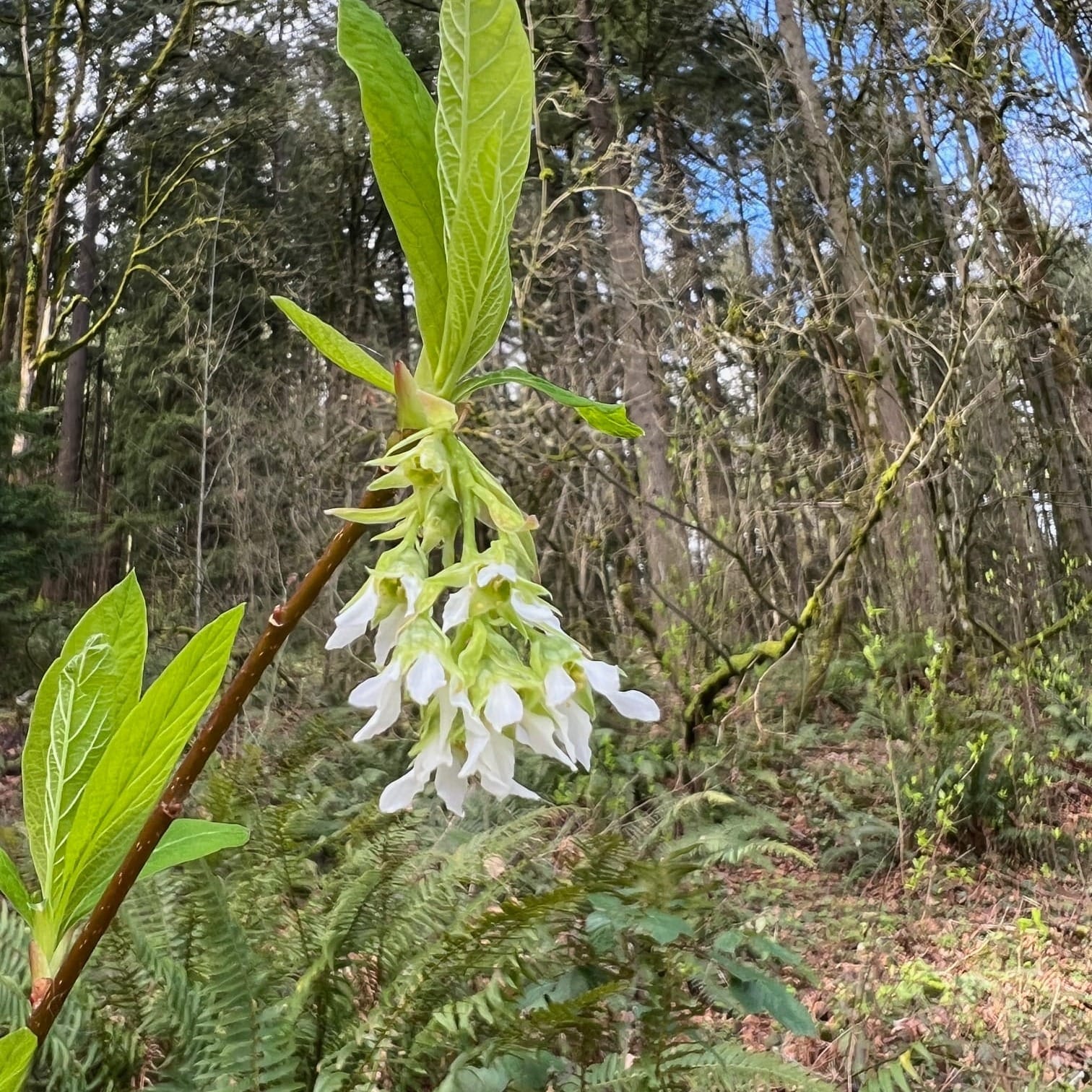
Coming to the Forests?
A second comment made by a friend recently helped to frame my thinking. She asked “when will it first come through our door?”. I took this to mean “when will these changes first have direct and tangible impacts on our individual lives?”. Though it can be counterproductive to speculate on what might lie ahead, as a steward and defender of forests, I can’t help asking and questioning how and when the tumultuous upheaval in the wider world might “come through the door” of the forests. Here is a sampling of the questions that I’m following:
- As we work toward a landscape-scale approach to conservation and restoration, who will care for the federal forest adjoining our forest? Will the administrations determined zeal to “unlock” extraction on federal lands, include clearcutting of this adjacent, recovering forest? Are our BLM contacts still employed? Will they have the capacity needed to care for the land?
- How might the thousands of species making up the forests’ interdependent webs of life be influenced if they lose the protections provided by such laws as the Endangered Species Act, Clean Water Act, Migratory Bird Treaty Act? Given that the future of Oregon forests hinge on approval by federal agencies of Habitat Conservation Plans and Oregon’s Private Forest Accord, while those agencies maintain the functionality needed to provide long-promised approval?
- What will become of our long and valuable partnership with US Fish and Wildlife Service scientists? Will our reliable agency partner still be there to work in partnership toward restoration?
- Given our economy’s trend toward a recession, how might that influence housing starts, log prices, the forests’ financial viability and our ability to provide needed work for loggers and others?
- With the administration’s hostilities toward tribes, how will that influence the well being and opportunities for our tribal neighbors and friends and our mutually beneficial partnerships as like-minded land stewards?
- When wildfires return, who will be ready to forecast the weather, to fight the fires and to restore the land? Will there be funding to pay the workers?
- And the workers? How might the work of ICE influence members of the Latino contract crews who we depend on for important work in the forest? Will they be harmed? Will it become harder to care for the forests? Who will stand up for their rights to safe and fair working conditions?
- How might the valuable science done in the forests be compromised as funding and staffing is cut for nearly all of the institutions and agencies that we work in partnership with? Who will join us in tracking, understanding and responding to the die offs of ash, fir, and cedar? Who will track and report on the changing climate that is already reshaping the forests? Who will track and report on the wellbeing of forest-dependent animals in our forests and region?
- How will the worsening climate crisis be accelerated by the shift of the federal government from being a committed problem solver to a denier and exacerbator of the problems?
- How might changes in federal policies and incentives slow our continuing progress toward ending our dependence on fossil fuels.
- If the neighbors continue with plans to mine gravel nearby, will legal systems be in place to help protect the common good and protect our forest’s rights?
- Knowing that forest well-being depends on a rising generation of educated, skilled and willing workers – from tree planters, loggers, scientists and foresters to millers, ecologists and nursery staff, what might be the consequences of slashed funding to our local universities?
- And should our judicial systems weaken and fail, what impact might that have on the ability of our land-related laws to help us strive for respectful and harmonious relationships with the living communities that sustain us?
Of course, we can’t know the answers to these questions, but considering them might help us become more aware of the ways that larger scale governmental change may, in the coming months and years, have direct impacts on the very local scale of forests like ours.
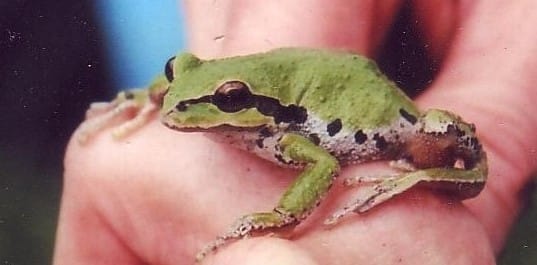
What’s There to Love?
Why should we, in this often discouraging journey of tracking this decade of reckoning, make time to focus attention on the dimensions of these thousand acres of forests that are there to love? Of the many reasons, these four stand out:
1 – There is so much there for one to notice, wonder about, love and be inspired by. The habit serves as a healthy reminder of my ignorance and the need to work towards becoming more perceptive.
2 – It’s all too easy to overlook what’s there to notice, appreciate and love.
3 – The practice provides me with a necessary and welcome counterbalancing way to bridge the gulf between the world as it is and the world as I wish it would become. The words of Robin Wall Kimmerer ring true: “I choose joy over despair. Not because I have my head in the sand, but because joy is what the earth gives me daily and I must return the gift.”. Time in the forests, taking note of the many gifts, reliably lifts my spirits
4 – And finally, learning to notice, appreciate and love is the foundation on which the shift to harmonious relationships with the more-than-human-world rests. Wendell Berry’s observation that “it all turns on affection” inspires and motivates me.
From my pages of possibilities, here is a small taste of some of what’s there to love:
– Who's Calling? “Did you hear that?!” On a late winter night that’s as dark as dark gets, we’re in the heart of the wild, still forest – listening. This listening is part of our annual monitoring of the forest’s owls – and the owl’s forest. Through this ongoing practice of paying attention and holding ourselves accountable we ask what the owls have to tell us. Our boots scrunch the road’s invisible gravel as we move toward the imagined sound. Seconds after the recorded call ends, the bold, loud response comes from close overhead. Before we finish savoring that remarkable wildness in the inky night, we feel the downdraft from the wings of the justifiably territorial owl as it makes its warning swoop close over our heads to land on a nearby limb. By night’s end, with the count complete, we return to the warmth of the hilltop cabin and snuggle into bed. On the clipboard propped beside the woodstove and the lantern, notations on the forest map capture the location, time and species – saw-whet, great horned, northern pygmy, screech, barred.
“Did you hear that?” – “Yes, and felt it too...”.
- Cedar – While recently planting vulnerable seedlings, I reflected on how fortunate I am to interact with cedar throughout their long life span. I have vivid images from all stages. From the unique aroma and feel of the seedling being slipped into the soil, to battling with the elk who want to eat them all, to carefully thinning smaller trees from a stand, transporting the log to our mill, milling it into siding, enjoying its sweet smell as I cut boards and nail it up as siding on our cabin and, finally appreciating it through the years as it weathers from pinkish, to brown and on to silver gray.
- High Energy! - Powerful winds roar in over the Coast Range, whining though the wildly yawing tree tops. Relentless, heavy rains pound down over all parts of the forest, driving the forest animals to find shelter wherever they can. The creek rises – and keeps rising – up above the base of one of the forest’s largest firs, then six inches up onto the I-beams supporting the bridge. The bridge thrums and shakes in the grip of the water’s wild power, but thankfully holds firm. I’m enveloped in sound – keening wind, breaking branches, maples and alders clacking into one another, the roar of churning waters.... Like a crazy chocolate milkshake, the boiling current carries large logs downstream, tearing at the banks and roaring off to the nearby Nehalem River and on to the ocean beyond. When the storm passes and the flood recedes, a remade creek will be revealed.
- The Between Time – As I write this, life in the forest has just reached a lovely time. Marking the end of another, long winter, spring’s green brings awakening grasses, unfurling ferns and leaves, returning birdsong, first delicate flowers and the promise of the forest reborn. All too soon we will be overwhelmed by the “green blizzard” of spring’s growth and the work that it demands, but for now we savor and appreciate that fleeting, once-a-year moment between – when it is magically alive and green – but demanding nothing of me - for now.
Tracking Atmospheric CO2 -
Of the many factors that we can reliably track, concentrations of global atmospheric CO2 seems important. On March 31, 2025 the measurement and calculation was 425.39 ppm. And this graph shows the larger trend:

And then........
